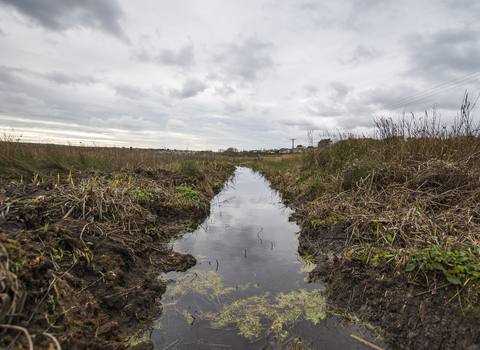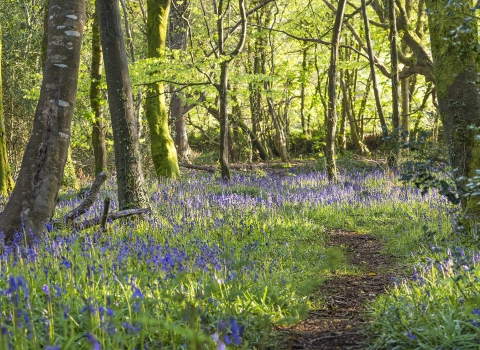
Sunset at Cornwall Wildlfe Trust's Upton Towans nature reserve. Image by Ben Watkins
Location
Know before you go
Dogs
When to visit
Opening times
Open at all timesBest time to visit
All year around interest. Best for butterflies in JuneAbout the reserve
The word ‘towans’ means ‘sand dunes’ in the Cornish language, and is sometimes seen in its older form, ‘tewan’, in place names such as Pentewan.
Britain’s coastal dunes, which provide a sanctuary for a variety of rare species, are internationally important for wildlife, and are listed as one of the most threatened habitats in Europe.
Upton Towans is home to various wildlife including toads, adders, lizards, orchids and masses of butterflies.
The reserve is important for the rare silver studded blue, a small butterfly that gets its name from the light blue reflective ‘studs’ (scales) found on the underside of its wings. The upper wings are blue with a dark outer rim and males are bluer than females, which are more of a dull brown. They flutter over the dunes in summer, finding sheltered patches of bare ground or short vegetation on which to lay their eggs, preferably near an ant colony. In return for a sugary substance the ants protect the larvae.
Petalwort, a tiny and internationally rare liverwort, often mistaken for moss, thrives in areas of very short vegetation, especially in the moist dune slacks and path edges amongst Upton Towans' sand dunes. Its curled fronds resemble petals, making it one of the prettiest tiny plants, if you can find it!
Summer visitors should also look out for the pyramidal orchid, a highly distinctive wildflower with a pyramid shaped head of bright pink flowers.
Birds found here include the skylark, kestrel, stonechat and, perhaps most abundantly, the meadow pipit. As this songbird’s name suggests, its preference is for open land with low vegetation, like sand dunes, where they can be seen year-round. Females build their nests on the ground but, despite hiding them amongst dense vegetation, they’re often infiltrated by cuckoo eggs, as cuckoos appear to favour meadow pipits as foster parents!
Visitors will also see the remains of the National Explosive Works, a site associated with Cornwall’s world famous mining heritage. The area is dotted with mine shafts. The National Explosive Works was created in 1888 to provide dynamite for the local mining industry and later manufactured military supplies. After just twelve months, the company was producing three tonnes of dynamite daily! It was an important local employer, providing work for 175 people in 1889, increasing to more than 1,800 (mainly women) during the First World War.










